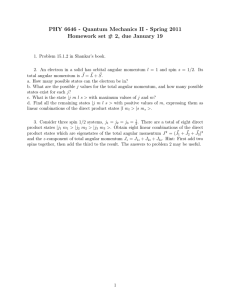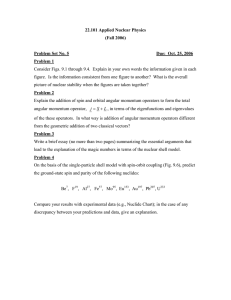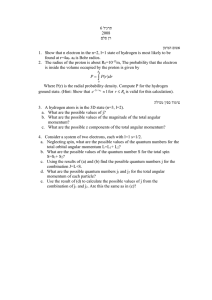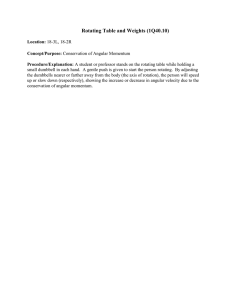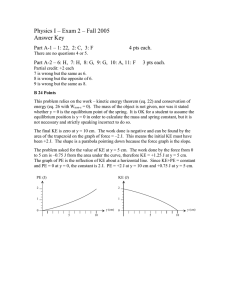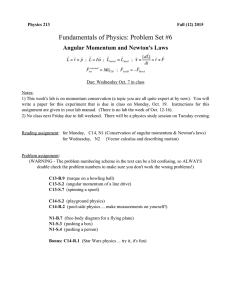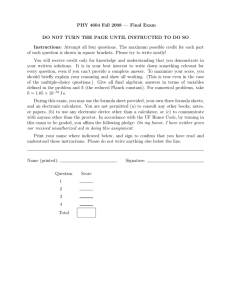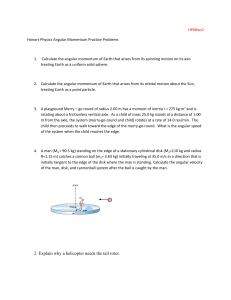PHY 6646 - Quantum Mechanics II - Spring 2013
advertisement
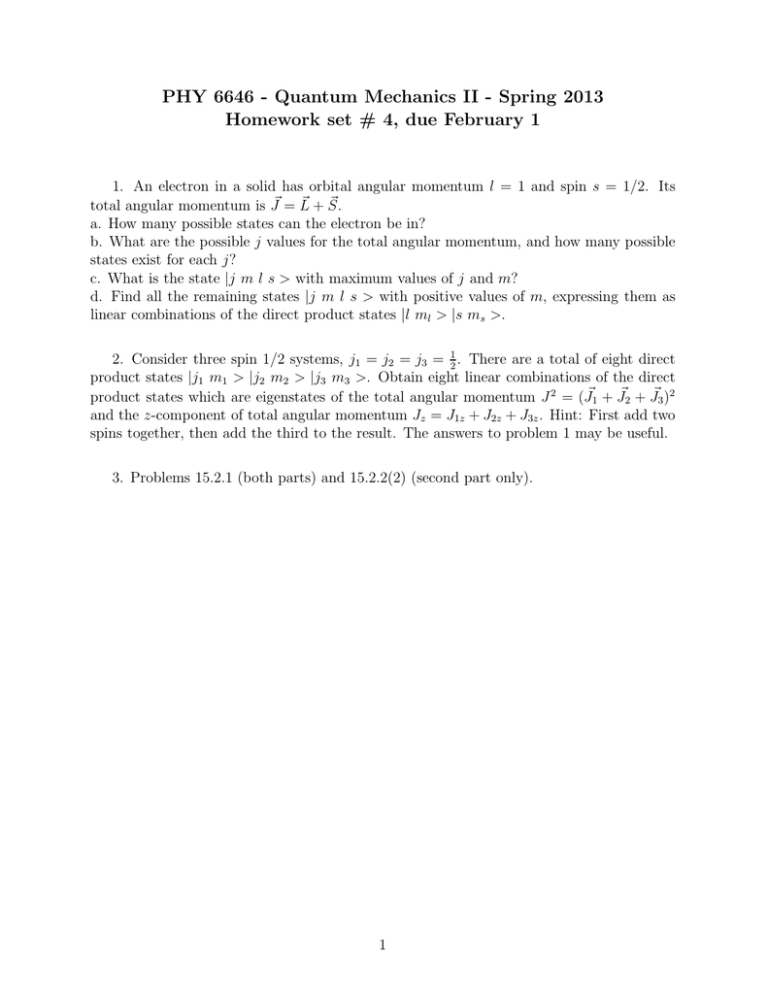
PHY 6646 - Quantum Mechanics II - Spring 2013 Homework set # 4, due February 1 1. An electron in a solid has orbital angular momentum l = 1 and spin s = 1/2. Its + S. total angular momentum is J = L a. How many possible states can the electron be in? b. What are the possible j values for the total angular momentum, and how many possible states exist for each j? c. What is the state |j m l s > with maximum values of j and m? d. Find all the remaining states |j m l s > with positive values of m, expressing them as linear combinations of the direct product states |l ml > |s ms >. 2. Consider three spin 1/2 systems, j1 = j2 = j3 = 12 . There are a total of eight direct product states |j1 m1 > |j2 m2 > |j3 m3 >. Obtain eight linear combinations of the direct product states which are eigenstates of the total angular momentum J 2 = (J1 + J2 + J3 )2 and the z-component of total angular momentum Jz = J1z + J2z + J3z . Hint: First add two spins together, then add the third to the result. The answers to problem 1 may be useful. 3. Problems 15.2.1 (both parts) and 15.2.2(2) (second part only). 1
